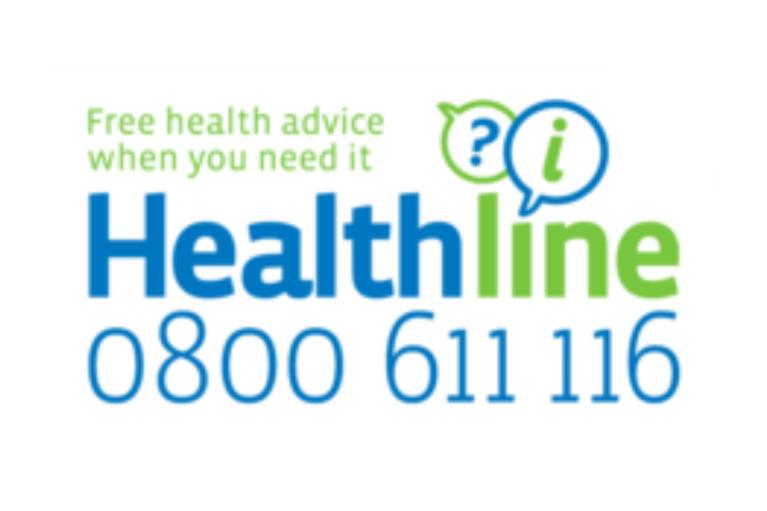Key points about nappy rash
- the main cause of nappy rash is wearing a wet or dirty nappy for too long
- change your baby's nappies as soon as possible after they become wet or dirty
- wash your baby's bottom at each nappy change with a warm wet cloth or baby wipe
- make sure the area is dry before putting on a new nappy
- put on a thick layer of barrier cream at each nappy change
- give your baby as much nappy-free time as possible each day
What is nappy rash?
Nappy rash is very common in pēpi. The skin looks red and can be spotty, particularly at the edge of the rash. It happens when the skin on your child's bottom is irritated.
Usually, nappy rash is mild and doesn't bother your baby but it can be sore when you wipe the area. Sometimes if the skin is raw, it can be very sore. Nappy rash may make your baby unsettled or irritable.
Causes of nappy rash
The main cause of nappy rash is wearing a wet or dirty nappy for too long.
Wetness and irritation
Wee and poo are irritating to the skin. The longer a baby wears a wet or dirty nappy, the more likely they are to get nappy rash. Watery loose poo (diarrhoea) can make nappy rash worse.
Some baby wipes and soap can cause dry skin or make the rash worse. Detergents and soaking solutions used for cloth nappies can irritate a baby's skin.
Infection
Yeast infection (candida or thrush) can grow in warm, moist areas and may be there if your baby has a nappy rash. Your health professional can give you a cream to treat the infection.
Occasionally, nappy rash can be caused by bacteria.
Preventing nappy rash
You can prevent nappy rash by:
- using a barrier cream or ointment
- giving your baby plenty of nappy-free time
- choosing quality disposable nappies or taking good care when using cloth nappies
Nappy change
Change your baby's wet or dirty nappy as soon as possible - 5 to 7 times a day for pēpi under 12 months of age.
Wash your baby's bottom gently at each nappy change with a warm wet cloth or baby wipe.
Make sure your baby's bottom is properly dry before putting on a new nappy. Let your baby’s bottom air dry or gently pat dry with a towel. Don’t rub the area.
Avoid the following as they can cause skin irritation:
- scented wipes - make sure to use baby wipes for sensitive skin, with minimal or no fragrance
- soap, bubble bath and lotions
- plastic pants
- talcum powder
Barrier cream
Barrier creams or ointments may help to protect your baby's skin from moisture. They form a barrier between your baby's skin and the poo or wee. Put on a thick layer of barrier cream at each nappy change.
Examples of barrier cream:
- zinc and castor ointment
- Bepanthen
- Sudocream
- white soft paraffin ointment
Nappy-free time
Give your baby as much nappy-free time as possible each day. This allows your baby’s skin to heal.
Nappies
If you are using disposable nappies, choose a good quality disposable nappy that allows moisture to be absorbed quickly.
If you are using cloth nappies:
- rinse dirty nappies immediately in cold water before washing
- wash the nappies in a hot wash
- use gentle laundry powders
- rinse them twice to remove soap residue
- dry them in the sunshine whenever possible
When to get medical help for nappy rash
Most nappy rash gets better with these simple steps.
Call Healthline on 0800 611 116 or see a health professional if the rash lasts for more than a few days. It may mean that there is a skin infection such as thrush.
Healthline is available 24 hours a day, 7 days a week on 0800 611 116. Call Healthline if you need advice about a child of any age who is unwell, hurt, or has any symptoms of sickness. It's free to callers throughout New Zealand, including from a mobile phone.
Treatments for nappy rash
If your baby's nappy rash doesn't get better with simple measures, your health professional may suggest an antifungal cream or a mild steroid cream or ointment. Occasionally, antibiotics are needed to treat infected nappy rash.
An antifungal cream that kills thrush (candida)
You usually put this on 2 to 3 times a day. Unlike a steroid cream, keep using an antifungal cream for 7 to 10 days after the rash has cleared, to make sure all the fungus has gone.
Use this without a barrier cream so that you can clear up the infection first. Then use the barrier cream to help clear up the nappy rash.
A mild steroid cream or ointment such as hydrocortisone
Steroid creams reduce the redness and inflammation. Use only a very small amount. Follow the instructions. Put the cream on before using a barrier cream or ointment. Use it for a few days until the rash has cleared. You don't usually need a steroid cream or ointment for more than 7 days.
Antibiotics kill bacteria
Occasionally, broken skin from nappy rash can become infected with bacteria. You may need to take your child to a health professional who may prescribe antibiotic medicine. Your child takes the antibiotics by mouth. You may also need to put on cream or ointment at the same time.

